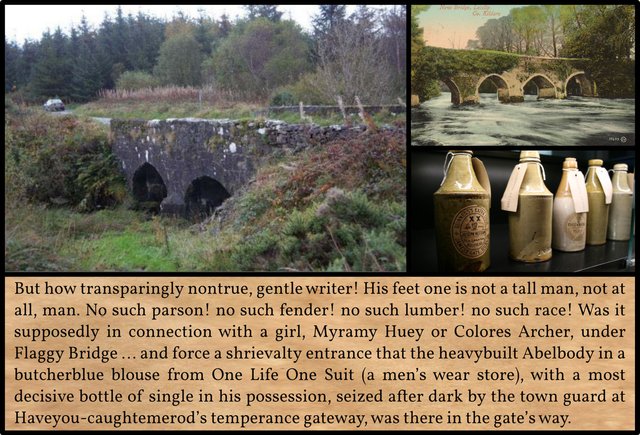
We continue our journalistic investigation into the HCE Affair. The last ten pages of Chapter 3 comprise an episode known as The Battery at the Gate. Following his condemnation in the court of public opinion―as expressed in the Plebiscite―HCE takes refuge within his tavern. This short paragraph was originally part of the previous paragraph, and, indeed, these two paragraphs were printed as one continuous paragraph when the first edition of Finnegans Wake was published in 1939. They were separated by Danis Rose & John O’Hanlon for The Restored Finnegans Wake in 2010. According to the James Joyce Digital Archive, Joyce actually split them during draft level 8, around 1930-1933.
As we learned in the previous article, Joyce spun this section out of some stories he came across in the popular press. He was particularly taken with an account in the Freeman’s Journal of an attempted break-in that occurred on Sheriff Street, Dublin, in October 1923, which was about a month before he first drafted this section:
Richard Whitely, Patrick Farrell, and William Hannon were found guilty at the Commission, charged with having at an early hour of the morning of Sunday, October 7, attempted to break into Pickford’s Store, 6 Upper Sheriff street, with intent to steal goods. It was stated by P.C. Sutton that he and another constable saw the three prisoners at the gate of the store. Hannon was pushing the gate with his shoulder and the others were standing by. When they saw witness they moved to a dark doorway. Whitely was carrying a fender. When witness asked where he got the fender one of the men said “that is for you to find out.” Whitely speaking from the dock, said they were only trying to open a bottle of stout by hammering it against the gate ... (Freeman’s Journal 21 November 1923)
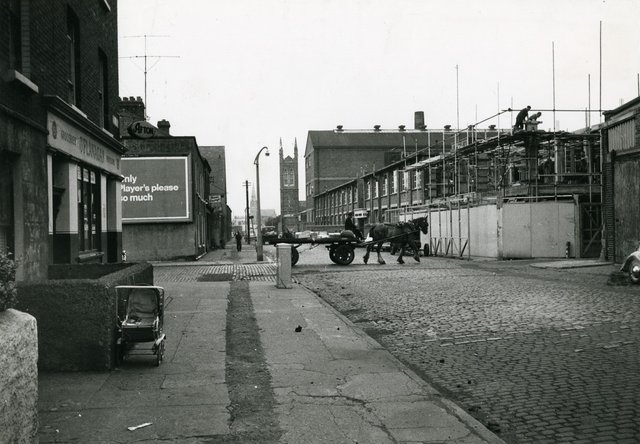
First Draft
The first draft of this paragraph was only about three lines long, but it did introduce the gate and the bottle of stout:
But how untrue. Six feet is not tall. Was it to explode & to force entrance that the man with a bottle of stout in his possession seized by the town guard in his very gateway was in the gateway. (Hayman 72–73)
The first draft of the previous paragraph, you may recall, comprised only a single line:
When returning late to the old spot a revolver was put to his face. (Hayman 72)
Joyce later emended this to:
A tall man returning late to the old spot had a revolver put to his face. (Hayman 72)
This emendation must have been made almost immediately. Otherwise the phrase Six feet is not tall in the first draft of the present paragraph would have made no sense.
Joyce worked on this passage over the next few years, and in June 1927, when a revised draft of this chapter was published in the third issue of Eugene Jolas & Elliot Paul’s literary journal transition, this paragraph read as follows:
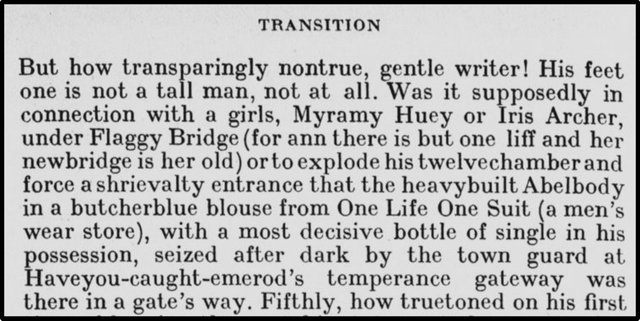
The following paragraph―Fifthly ...―was still part of this long paragraph. By 1939 it had gained its independence. Otherwise, this passage is very close to the final version. Joyce made only a few minor emendations between 1927 and 1939.
Commentary
transparingly nontrue transparently untrue : sparingly
gentle writer gentle reader is the traditional way a novelist addresses his readers, but writer is appropriate here, given the journalistic nature of this chapter. In the original edition this read gentlewriter : transition had gentle writer.
No such parson. No such fender. No such lumber. No such race. Grammatical terms: person, gender, number, case. New Bridge, which appears three lines below, is partly in the townland of Parsonstown, County Kildare. The mysterious fender was introduced in the last paragraph.
a girl, Myramy Huey or Colores Archer Issy’s twin personalities. In transition and the first edition this read a girls. Rose & O’Hanlon restored the original form in 2010. The singular emphasizes that there is really only one girl.
The colourful attributes remind us that Issy’s 28 girlfriends are closely associated in Finnegans Wake with that Noachic symbol of regeneration the rainbow:
Latin: mira me, admire me : Myra, a girl’s name.
Huey hue. Hugh is a boy’s name.
Colores colour : Dolores, a girl’s name.
Archer The arch of the rainbow : French: arc de ciel, rainbow. Arthur is a boy’s name.
Issy is the 29th rainbow girl, the leap-year girl―29 February is her birthday. Is this why Joyce introduces Leixlip (the site of New Bridge) below? Leixlip means salmon leap.
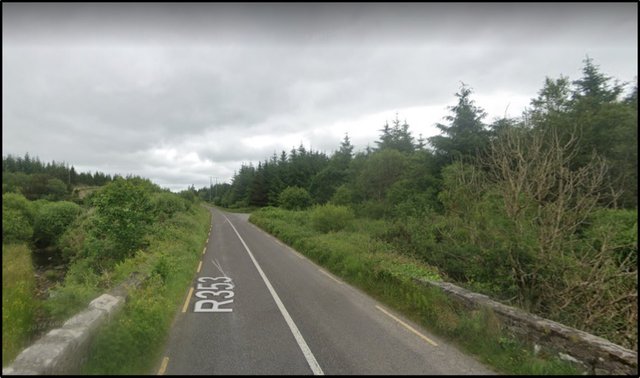
Flaggy Bridge ... (for ann there is but one liv and hir newbridge is her old)
Flaggy Bridge is a road bridge in County Galway, 2.6 km east of Derrybrien on the R353 between Gort and Portumna. Joyce came across the name in the Connacht Tribune.
Annie Liffey is an old nickname for the Liffey, probably from the Irish: Abhainn Life, River of Liffey. Personified, she is of course the inspiration for HCE’s wife ALP, or Anna Livia Plurabelle.
The New Bridge was constructed on the Liffey a few kilometres upstream from Leixlip. It was once thought to be the oldest standing bridge in these islands. The original bridge was erected in 1308 by John Le Decer, Mayor of Dublin, at his own expense. It linked the townlands of Coneyburrow and Parsonstown. Originally comprising four arches, it was recently rebuilt with three to facilitate the development of the adjacent water reservoir and the Leixlip hydro-electric dam 2 km downstream, which was constructed in 1945.
Shahada: There is no God but Allah and Muhammad is His prophet. This Islamic expression of faith seems out of place following all the denials (nontrue ... not at all, man ... no such ...).

to explode his twelvechamber A twelve-chambered revolver. When HCE drew his watch from his pocket during the original Encounter in the Park with the Cad, the action was described as though he were a gunslinger drawing a repeating pistol. A twelve-shot revolver was invented by John Walch in 1859. It only had six chambers, but each chamber could fire two bullets separately. Joyce made a note 12chamber revolver in VI.B.18, a notebook compiled around March–July 1927, but the source is unknown. A story in The Waterford Mail, a provincial Irish newspaper, for 17 January 1870 mentions a twelve chamber revolver, so such guns were known in Ireland. (The same page includes the word Shrievalty in the headline of another story.)
Abelbody in a butcherblue blouse Whenever you come across Abel in Finnegans Wake, you should look for Cain. Usually these two brothers, who embody the sibling rivalry between Shem and Shaun, share the same paragraph. In this case, however, when Joyce split this paragraph off from the previous one, he sundered Abel from his brother. Cain can be found on the previous page: that Kane’s fender.
The reference to Abel as a butcher was taken from Thomas Joseph Lamy’s Commentarium in librum Geneseos of 1884. Lamy was a Belgian theologian. Joyce was probably tickled by his surname, which evokes Abel’s lambs:
Scilicet mactaverit Abel in honorem Dei primogenita gregis.
[Of course Abel will have slaughtered the first-born of the flock in honour of God.] ―Lamy 248
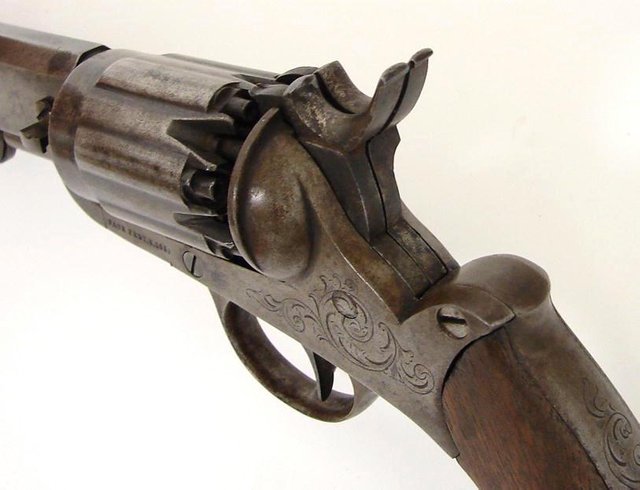
This is the first of several allusions to a blue butcher’s blouse or bishop’s apron (FWEET). The source, I think, is Joseph Walker McSpadden’s Robin Hood and His Merry Outlaws (1923). Chapter III is based on a traditional story in the Robin Hood cycle and has the title:
How Robin Hood Turned Butcher, and Entered the Sheriff’s Service.
In this chapter Robin Hood meets a butcher and exchanges clothes with him:
“One moment more,” laughed Robin, “we must e’en change garments for the nonce. Take mine and scurry home quickly lest the King’s Foresters try to put a hole through this Lincoln green.”
So saying he donned the butcher’s blouse and apron, and, climbing into the cart drove merrily down the road to the town. (McSpadden 34)
This book was originally published as Stories of Robin Hood and His Merry Outlaws in 1904 but it was reissued in 1923, shortly before Joyce first drafted this passage. The reference to a shrievalty entrance―a shrievalty is a sheriff’s office or jurisdiction―only strengthens the allusion. On the previous page of Finnegans Wake we had another instance of HCE swapping clothes with someone he meets: changing clues with a baggermalster (RFW 049.39).
- butcher blue a dressmaker’s name for a particular shade of dark blue often used for butchers’ aprons.
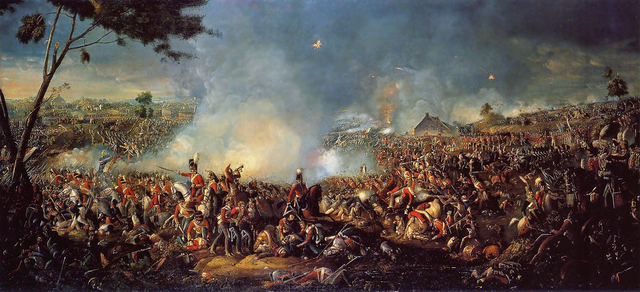
- with a most decisive bottle of single in his possession This curious phrase echoes a line from the Museyroom Episode:
This is me Belchum sneaking his phillippy out of his most toocisive bottle of Tilsiter. This is the libel on the battle. Awful Grimmest Sunshat Cromwelly, Looted. (RFW 007.29–31)
The image conjured up is of HCE’s Manservant and bartender Sackerson―Pore ole Joe―sneaking a drink (a fill-up) from a bottle of stout, which is labelled Arthur Guinness, Sons & Company, Ltd. Tilsiter is actually a variety of cheese named for the Prussian city of Tilsit. I presume this innocent foodstuff has been substituted for Pilsener, a popular Bohemian beer. But single suggests that he is drinking something a bit stronger than stout: single malt whiskey. FWEET, however, glosses single as mild ale or beer.
Why is the bottle toocisive or decisive? Note than in this passage bottle has changed places with battle. Waterloo was certainly a most decisive battle. The upshot is that the Battery at the Gate, like Waterloo, is another instance of the Oedipal Encounter that precipitates HCE’s fall from grace.
- Haveyou-caught-emerod’s temperance gateway HCE. English: emerods, haemorrhoids. In the King James Bible the wicked are sometimes afflicted with emerods.
VI.B.5.001i (May–July 1924) has temperance hotel, accompanied by Joyce’s square siglum, which represented the book, ALP’s Letter, and all containers of HCE: 🞎. HCE’s Mullingar House is no more a temperance hotel than Tilsiter is harmless cheese. This is another example of Sigmund Freud’s dream censor cleaning things up (Freud 121 ff).
A temperance hotel is a hotel in which alcohol is banned. In March 1921 members of Michael Collins’ Twelve Apostles Squad assassinated a British agent as he was coming out of St Andrew’s Temperance Hotel on Exchequer Street.
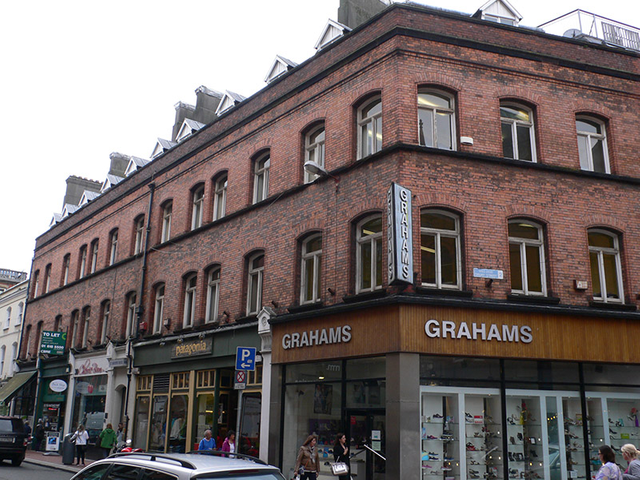
Another of Dublin’s temperance hotels, the Edinburgh on Upper Sackville Street (O'Connell Street), is mentioned in the Hades Episode of Ulysses.
Cricket
A single is also a cricketing term: a score of one run. This may be an opportune time to take a quick look at this quintessentially English game, which plays a curiously prominent rôle in Finnegans Wake.
- batter In his notes Joyce referred to this incident as Batter at Gate (VI.B.1.163, though Rose & O’Hanlon transcribe this as Battery at Gate). If the gate in question was a wicket gate, then batter can only refer to a batsman in cricket. In that game wicket took its name from a wicket gate, which it originally resembled. In its modern form, the wicket closely resembles HCE’s siglum.
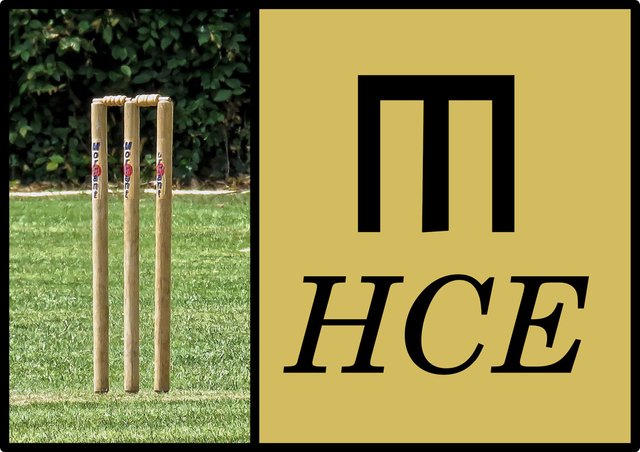
Unlike most Irishmen, James Joyce loved cricket, and Finnegans Wake is full of allusions to the game. I will probably take a closer look at this aspect of the novel in a future article, but in the meantime I direct the interested reader to Peter Chrisp’s engaging account: James Joyce: Cricket Lover.
- A Cricket Wicket: © Acabashi (photographer), Creative Commons License
And that’s as good a place as any to beach the bark of our tale.
References
- Sigmund Freud, Abraham Arden Brill (translator), The Interpretation of Dreams, Third Edition, The Macmillan Company, New York (1913)
- David Hayman, A First-Draft Version of Finnegans Wake, University of Texas Press, Austin, Texas (1963)
- James Joyce, Finnegans Wake, The Viking Press, New York (1958, 1966)
- James Joyce, James Joyce: The Complete Works, Pynch (editor), Online (2013)
- [Thomas Joseph Lamy]( Scilicet mactaverit Abel in honorem Dei primogenita gregis;), Commentarium in librum Geneseos, H Dessain, Mechelen, Belgium (1883)
- J Walker McSpadden, Robin Hood and His Merry Outlaws, Thomas Y Crowell Company, New York (1923)
- Danis Rose, John O’Hanlon, The Restored Finnegans Wake, Penguin Classics, London (2012)
Image Credits
- Flaggy bridge: © Electricity Supply Board, Fair Use
- New Bridge, Leixlip: Anonymous Postcard (1912), South Dublin Libraries, Public Domain
- Guinness Bottles: © BrewPublic (photographers), Guinness Archives, Fair Use
- Upper Sheriff Street: Anonymous Photograph, Public Domain
- Flaggy Bridge, Derrybrien East: © Google Maps, Fair Use
- New Bridge, Parsonstown & Coneyburrow: © Max Well (photographer), Fair Use
- A John Walch Twelve Short Revolver: © Marty Kavanagh (photographer), Fair Use
- The Decisive Battle of Waterloo: William Sadler (artist), Private Collection, Public Domain
- St Andrew’s House: National Inventory of Architectural Heritage, © Department of Housing, Local Government and Heritage, Fair Use
Useful Resources
- Jorn Barger: Robotwisdom
- Joyce Tools
- FWEET
- The James Joyce Scholars’ Collection
- FinnegansWiki
- James Joyce Digital Archive
- From Swerve of Shore to Bend of Bay
- John Gordon’s Finnegans Wake Blog
- James Joyce: Online Notes
